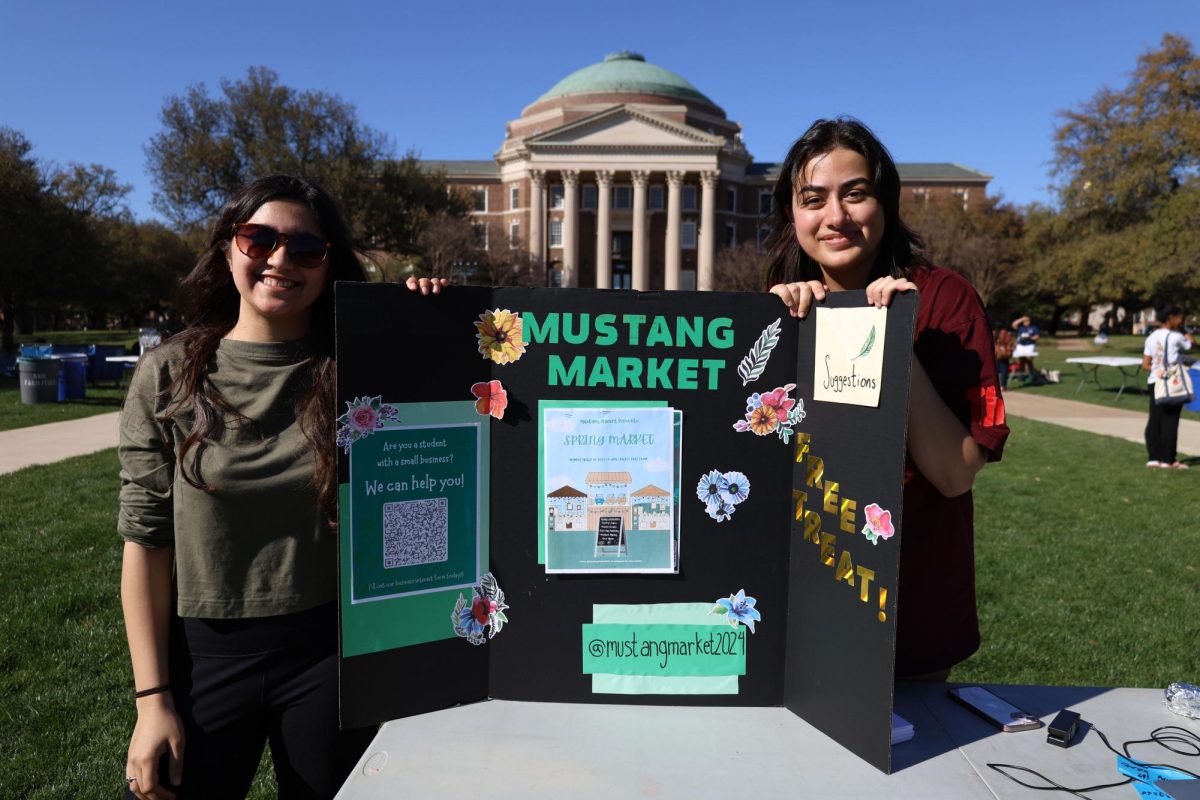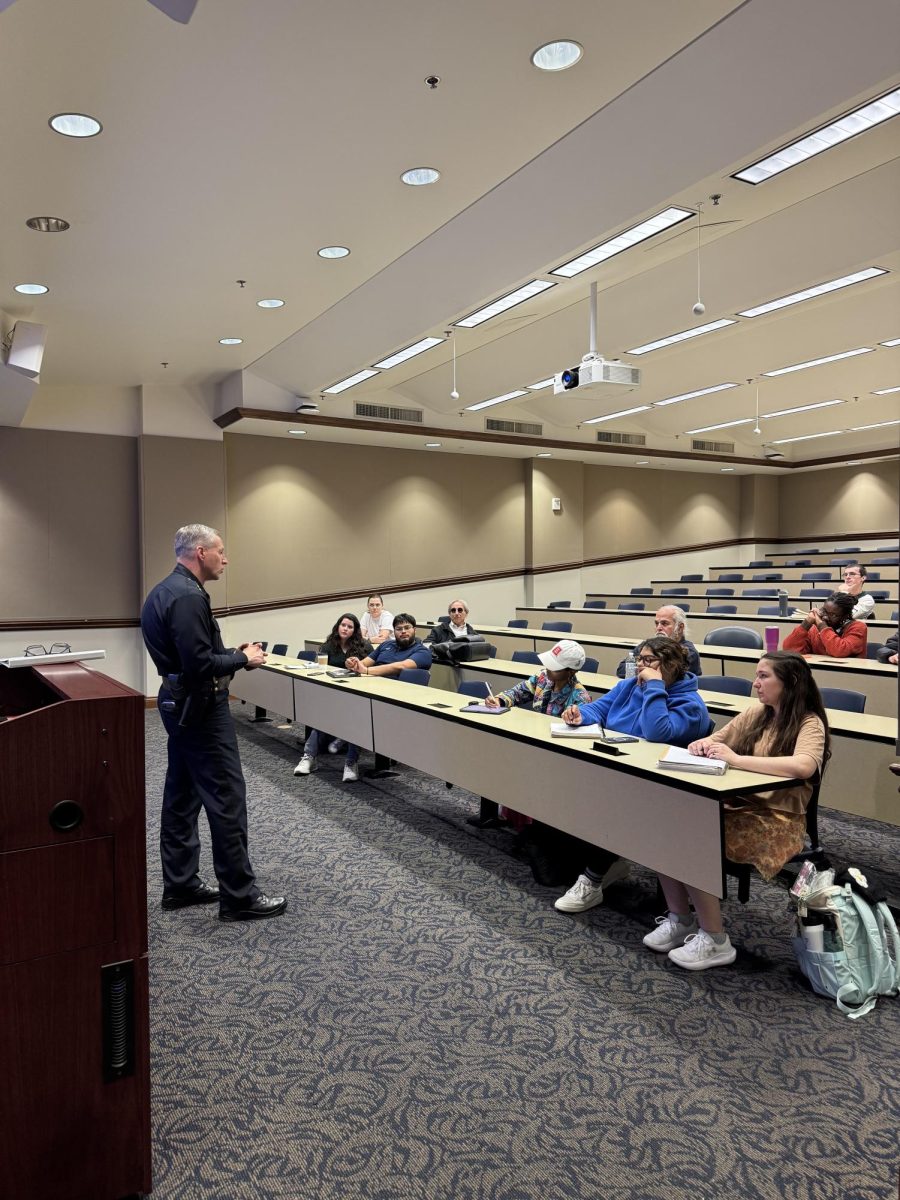When I heard that Dallas’ Ronald McDonald House was celebrating 30 years this year, I knew I wanted to cover the story.
I had never been to the Ronald McDonald House, so I had no idea what to expect when I turned onto Bengal Street and saw the house enclosed by an iron fence.
As I walked through the double doors, I immediately felt at home. To the right of the entrance was a huge great room with oversized couches and chairs, leading to a porch with rocking chairs.
Laughing children could be heard as I walked down a baby blue painted hallway on my tour of the kitchen, craft room and children’s playrooms.
It was hard to imagine that this is just one of the 175 Ronald McDonald Houses in the United States where sick children would stay while getting treatment for cancer or waiting for a transplant. A place where more than 28,000 families have stayed since the Dallas house opened in 1981.
Each family touched me with their experiences while staying at the house.
Although children from all over come to stay at Ronald McDonald House in Dallas, while they receive treatment from nearby hospitals, each child, and family, has a story.
Here are three of them.
Blake’s Story
Since April, Stephanie Pearce and her 16-year-old son, Blake, spent just one week in their home in Moore, Okla.
Instead, the two have been staying in Dallas’ Ronald McDonald House while Blake undergoes dialysis every Monday, Wednesday and Friday.
Waiting for his second kidney transplant, Blake was given a pager and activated to status one on March 3, 2011, meaning he could receive a kidney at any moment.
“We are hoping for a ding-dong,” Pearce said as she held up the pager.
Blake’s first kidney transplant was three years ago in Oklahoma. Within four days, he rejected the kidney and went into cardiac arrest.
The kidney tested positive for traces of cocaine, marijuana and alcohol.
“I was shocked,” Pearce said.
That’s when she began a year and a half of research to find a new hospital for Blake.
“The Children’s Medical Center of Dallas has a 100 percent life expectancy rate after a kidney transplant,” she said. “Oklahoma’s [rate] is 70 percent.”
At the end of 2008, Blake was transported by ambulance from Oklahoma to Dallas.
Pearce slept in a chair every night in a hotel until that April, when she heard about the Ronald McDonald House. Here, Pearce and her son have formed bonds and found support from other families.
“When you have a really sick kid, you’re in a whole different world,” Pearce said as tears formed in her eyes. “These people- these friends- they understand. They have become family away from family.”
Blake used to skateboard and ride his bike until he got a blood clot in his jugular vein. Because he is on immunosuppressants, which weaken his immune system, he cannot go out in public for fear of getting sick.
However, the Ronald McDonald House reminds Blake he is still a kid.
The library is Blake’s favorite room in the 60,000 sq. ft. house because “it has lots of books and smells good.” He also enjoys playing pool, X-box games and Wii in the teen room.
“It’s neat. The kids look beyond each others disabilities,” Pearce said as she asked Blake to show his catheter, his lifeline.
Though the house provides comfort to families, it also offers financial support.
Pearce, who worked in a hospital in Oklahoma, used the Family and Medical Leave Act (FMLA), which allows employees to leave work for 12 weeks within a year.
As Blake’s condition worsened, the 12 weeks was not enough. Pearce, who is divorced, lost her job and her income.
“The Ronald McDonald house financially saves you,” she said.
When the doors opened in 1981, guests were asked to pay $5 per night. Now, celebrating its 30th year, guests are asked to pay $15 per night. No one is turned away, regardless of their ability to pay.
“This is not a huge increase in 30 years,” Marketing and Communications Coordinator Danna Flemons said. “The community here in Dallas has really supported us.”
For Pearce, the Ronald McDonald House is a blessing.
“You don’t feel so isolated and alone,” she said. “You walk through the doors, into your own little sanctuary, and it feels like home.”
Norma’s Story
The Ronald McDonald House is more than a house for Norma Harlan.
In 1997, Harlan came to the Ronald McDonald House in Dallas from Austin, Texas with her 18-year-old son, Justin, as he started treatment for leukemia.
For six months, Justin underwent chemotherapy.
In August 1998, he relapsed and received a bone marrow transplant. However, that was not enough.
Justin passed away at the end of that year.
Then in April 1999, the position for resident manager at the Ronald McDonald House opened up.
“The rest is history,” Harlan said. “I felt like I had a mission, something to share with the families.”
For the past 12 years Harlan has served as the resident manager at the Dallas house. She lives on site and works evenings. On the weekends she travels home to Austin, Texas to spend time with her husband, Ralph.
“It’s really a process for me, being here and helping families,” Harlan said. “Justin loved the Ronald McDonald house. I attribute being here to him.”
While working at the house, Harlan has watched both the house and families grow.
“It’s exciting to the see the families, the ones that have to come back,” she said. “I have watched several families grow up here. They come when they are eight or 10 and now they have graduated from high school.”
When these families come back to visit Harlan and other staff members, they come to the new Ronald McDonald house that opened in December 2009.
The biggest change is that the new house can accommodate 58 families. Each family gets their own room, which has two queen beds and a private bathroom. There are also six separate transplant suites for children who cannot be exposed to other illnesses as they receive organ or bone marrow transplants.
The new house also has a respite room, which allows in-town families to relax between appointments.
“We’ve worked hard to keep the house a home and still have a close family feeling,” Harlan said.
The majority of the funds come from local donations and volunteers. Whether it is setting up bingo night, hosting movie night, leading a crafting activity or serving meals, more than 400 volunteers help the 30 to 40 staff members a week.
One feature only the Dallas house offers: Volunteers come in and cook all three meals each day.
Lindsey Akins, a volunteer with the Junior League of Dallas, comes every Thursday to cook.
“I like the interaction with the families,” she said. “It’s nice to make a difference in their daily life.”
Harlan agreed.
“I love what I’m doing, even if it’s something small like bringing a family a toothbrush because they forgot one,” she said.
Josiah’s Story
Six-year-old Madison Brewer played in the indoor children’s playroom on day recently, as her father, Josh, watched while responding to emails from the Wi-Fi area.
Madison laughed with other children while they tried to keep a large bouncy ball in the air.
Madison is not sick. Her baby brother, Josiah, was born with omphalocele disease and is in Dallas receiving treatment.
Omphalocele, a type of hernia, is a birth defect causing the intestines or other abdominal organs to stick out of the belly button. According to PubMed Health, approximately 25 percent to 40 percent of infants born with omphalocele are also born with other birth defects.
Three-week-old Josiah also has a heart defect.
Knowing that Josiah would be born with these conditions, his parents and sister have relocated from Paris, Texas to the Ronald McDonald House in Dallas.
“We had friends stay here before,” father Josh Brewer said.
“They said it was a great place.”
Josiah is currently being treated at Baylor Hospital where his intestines have successfully been put inside him.
Now, Josiah waits for a heart.
“It should only be a couple of weeks longer,” Brewer said. “Hopefully no more than a month.”
Although Josiah will remain in the hospital, unable to join sister Madison in the playroom, the Ronald McDonald house has become a home away from home for the Brewer family.
“We’ve been on a rollercoaster the past two weeks, but this place makes it feel like home,” Brewer said.
Facts about Dallas’ Ronald McDonald House
- More than 28,000 families have been served by Dallas’ Ronald McDonald house since its opening in January 1981.
- Ronald McDonald House provides rooms, meals and activities for families who have children being treated nearby hospitals such as Children’s Medical Center and Texas Scottish Rite Hospital for Children.
- The first Ronald McDonald House opened in Philadelphia in 1974. Now, there are approximately 175 houses in the United States and 300 houses worldwide.
- Children must begin treatment by age 18 but can continue staying at the Ronald McDonald House until their treatment is over.
- The main boarding qualification for Dallas’ house: The family must live more than 40 miles outside the Dallas area and provide a valid government issued photo ID card.
For more information visit the Dallas’ Ronald McDonald House website at www.rmhdallas.org.








